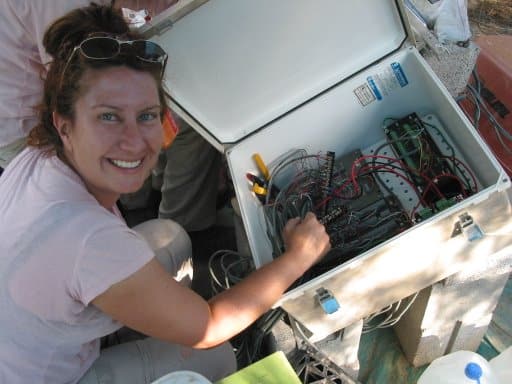Pamela L. Nagler is a Research Physical Scientist with the U.S. Geological Survey (USGS) Southwest Biological Science Center in Tucson, Arizona. At USGS she was the first scientist to definitively determine that Tamarix, an introduced shrub that was thought to consume large amounts of water, does not, as many assumed, consume more water than native riparian plants. She has also focused on tracking the rapid movement of biocontrol Tamarix beetles in western rivers, with consequences for riparian ecology and restoration efforts. In 2010, Pamela received the Presidential Early Career Award in Science and Engineering (PECASE) for the impact of her scientific findings on the ecology and water use of riparian plants. Her research has been transformative in the management of invasive shrubs in the western U.S. and has had positive effects on the partner organizations and policies that govern water quantification, supply and demand, and the impact of disturbance (invasive species). Pamela received her PhD from the University of Arizona in 2001, under the mentorship of Professor Edward P. Glenn.
Pamela’s interest in serving on the Sonoran Joint Venture board is because of her primary research focus: the measuring, mapping and monitoring of landcover changes in avian habitat, particularly in dryland riparian areas in the southwestern U.S. and Mexico. Pamela has worked on research projects that focus on restoration activities that have a goal of restoring habitat for birds. Pamela is currently working on linking avian information with a larger modeling framework that includes hydrology-vegetation-habitat and will be providing scientific answers to questions on the response of the avian community under various water delivery scenarios, which will be used to inform management of best practices for revitalizing riparian habitats in the Colorado River’s delta in Mexico under Minute 323. Pamela’s favorite habitat in the SJV region are the salt cedar dominated riparian zones that need help!

